
From the Archive: Tiny Furniture

The radical notion that women like good movies

This post by Stephanie Rogers first appeared at Bitch Flicks in March 2009.
Rule #1Sharing fun, challenging and intellectually engaging activities can strengthen friendships.
The point is: Male friendships need not solely revolve around sports and beer. In fact, in today’s movie world, those guys are the losers to be mocked and avoided.
Rule #2Friends are optimists, not naysayers.
The point is: No one likes to be around negative energy. If the dude doesn’t like Bob Marley, tell him “peace out” and move on.
Rule #3Friends carry each other.
Rule #4Friends accept friends for how they are. Even when alerting the authorities might be the more prudent call.
The point is: If your friends are 40 years old and still living at home (Step Brothers), don’t try to change them. Buy them a case of Fruit Roll-Ups instead. If your buddy is a heavily medicated mall cop looking to join the police force (Seth Rogen’s upcoming Observe and Report), you pat him on the head and hand him some pepper spray. And if your wingman gets a fake ID with the name McLovin on it — well, you can tell him he’s an idiot — but then you ask him to go score some beer.
Rule #5Friends make an effort to stay in touch.
The point is: … You don’t wait for buddies to call you. You pick up the phone. Or better: Just show up on their doorstep.
Rule #6Friends remain equally loyal in good times and bad.
Rule #7Friends know it’s OK to say, “I love you.” But they don’t have to, you know, talk about it at length.
The point is: These days in movies, male friendship means never having to say anything more than “I love you, man.”
 How many movies actually pass the test?
How many movies actually pass the test?
Thanks to Unapologetically Female for cuing us in!
—
In Mississippi, the former blues man Lazarus is in crisis, missing his wife that has just left him. He finds the town slut and nymphomaniac Rae dumped on the road nearby his little farm, drugged, beaten and almost dead. Lazarus brings her home, giving medicine and nursing and nourishing her like a father, keeping her chained to control her heat. When her boyfriend Ronnie is discharged from the army due to his anxiety issue, he misunderstands the relationship of Lazarus and Rae, and tries to kill him. (Claudio Carvalho)
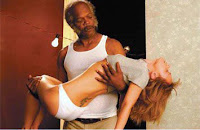 This is a movie that I want to love. It’s gritty, unique, and aware of class and race—a rare combination. However, there is no female perspective in the movie. Is it really too much to ask for a sharp film to also be sharp about gender? Is it right for a film like BSM to claim gender as a theme, while not really exploring women at all? Rae is the only female character (brief appearances by Lazarus’ wife, Rae’s mother, and a kind pharmacist easily fit into the angel/monster dichotomy), but she isn’t quite a real person. What is wrong with her? She is talked about as a nymphomaniac, and has strange, demonic fits of desire, but she’s really a victim of rape and abuse. Lazarus, whose trauma is that his wife aborted his baby and left for his younger brother, takes it upon himself to “cure” her by chaining her to a radiator. Even if the movie isn’t to be taken literally (but as a metaphor of sorts), why are the other characters so human and she so other, so animal?
This is a movie that I want to love. It’s gritty, unique, and aware of class and race—a rare combination. However, there is no female perspective in the movie. Is it really too much to ask for a sharp film to also be sharp about gender? Is it right for a film like BSM to claim gender as a theme, while not really exploring women at all? Rae is the only female character (brief appearances by Lazarus’ wife, Rae’s mother, and a kind pharmacist easily fit into the angel/monster dichotomy), but she isn’t quite a real person. What is wrong with her? She is talked about as a nymphomaniac, and has strange, demonic fits of desire, but she’s really a victim of rape and abuse. Lazarus, whose trauma is that his wife aborted his baby and left for his younger brother, takes it upon himself to “cure” her by chaining her to a radiator. Even if the movie isn’t to be taken literally (but as a metaphor of sorts), why are the other characters so human and she so other, so animal? Response by Stephanie
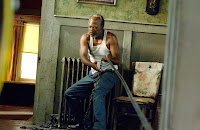 Later though, after Lazarus “cures” her by wrapping a giant chain around her waist and attaching it to a radiator, Rae is allowed to enter society again, showing up at a bar with Lazarus, drinking, rubbing up against everyone on the dance floor while Lazarus watches her from the stage, almost approvingly. What’s going on here? I truly want to read this as much more complicated than a man giving a woman permission to flaunt her sexuality, and I think it is.
Later though, after Lazarus “cures” her by wrapping a giant chain around her waist and attaching it to a radiator, Rae is allowed to enter society again, showing up at a bar with Lazarus, drinking, rubbing up against everyone on the dance floor while Lazarus watches her from the stage, almost approvingly. What’s going on here? I truly want to read this as much more complicated than a man giving a woman permission to flaunt her sexuality, and I think it is.
Response by Amber
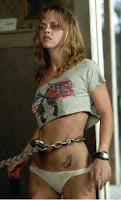 But back to the way gender and sex intersect. If nymphomania is itself largely fictitious, the strange way Rae’s fits were portrayed—moments in the film that were suspended between fear and comedy—reveals some of the ideological confusion of the film. If not for her nearly-naked body, battered and bruised and constantly displayed, I might have more sympathy for the film’s motivations. Add that to Rae’s moment of catharsis where she beats the shit out of her mother with a mop handle (for allowing Rae to be raped, either by her father or another male figure in her home), and we see women destroyed by sex who we’re supposed to sympathize with.
But back to the way gender and sex intersect. If nymphomania is itself largely fictitious, the strange way Rae’s fits were portrayed—moments in the film that were suspended between fear and comedy—reveals some of the ideological confusion of the film. If not for her nearly-naked body, battered and bruised and constantly displayed, I might have more sympathy for the film’s motivations. Add that to Rae’s moment of catharsis where she beats the shit out of her mother with a mop handle (for allowing Rae to be raped, either by her father or another male figure in her home), and we see women destroyed by sex who we’re supposed to sympathize with.
Response by Stephanie
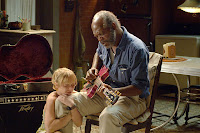 In that moment of catharsis with her mother, I found myself detached. Instead of sympathizing with Rae and coming to some kind of realization myself, I just rolled my eyes at the ridiculous, clichéd consequences of her abuse—girl gets raped by father-figure while mother does nothing to stop it, girl develops low self-esteem, girl becomes town slut, girl develops a fictional sex disease, girl gets chained to radiator by religious black man. Wait, what? Ah religion, how you never cease to reinforce the second-class citizenship of women, perpetually punishing them for their godless desire to fuck.
In that moment of catharsis with her mother, I found myself detached. Instead of sympathizing with Rae and coming to some kind of realization myself, I just rolled my eyes at the ridiculous, clichéd consequences of her abuse—girl gets raped by father-figure while mother does nothing to stop it, girl develops low self-esteem, girl becomes town slut, girl develops a fictional sex disease, girl gets chained to radiator by religious black man. Wait, what? Ah religion, how you never cease to reinforce the second-class citizenship of women, perpetually punishing them for their godless desire to fuck. I’m not writing from a place of progress. I’m not writing a movie that I want people to necessarily intellectualize. And I think that really messes with people who feel that they need to make a statement against this, and they don’t quite know what it is they’re against. Because man alive, you look at this imagery on this poster, and I’m so obviously banging this drum. It’s like, you really believe that I believe this? That women need to be chained up? Can we not think metaphorically once race and gender are introduced?
1. Angelina Jolie: $27 million
1 Oscar win, 2 Oscar nominations
2. Jennifer Aniston: $25 million
0 Oscar wins, 0 Oscar nominations
2 Oscar wins, 15 Oscar nominations
4. Sarah Jessica Parker: $23 million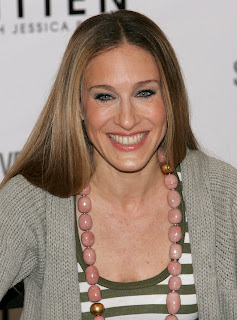
0 Oscar wins, 0 Oscar nominations
0 Oscar wins, 0 Oscar nominations
6. Sandra Bullock (tie): $15 million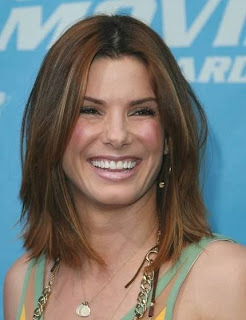
0 Oscar wins, 0 Oscar nominations
7. Reese Witherspoon (tie): $15 million
1 Oscar win, 1 Oscar nomination
8. Nicole Kidman (tie): $12 million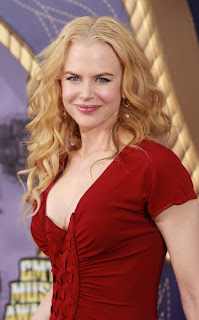
1 Oscar win, 2 Oscar nominations
9. Drew Barrymore (tie): $12 million
0 Oscar wins, 0 Oscar nominations
10. Renee Zellweger: $10 million
1 Oscar win, 3 Oscar nominations
11. Cate Blanchett: $8 million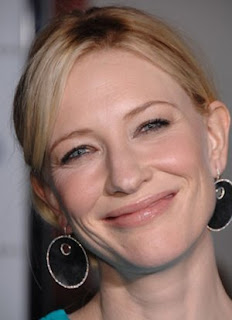
1 Oscar win, 4 Oscar nominations
12. Anne Hathaway (tie): $7 million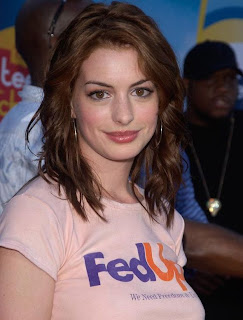
0 Oscar wins, 1 Oscar nomination
13. Halle Berry (tie): $7 million
1 Oscar win, 1 Oscar nomination
14. Scarlett Johansson: $5.5 million
0 Oscar wins, 0 Oscar nominations
1 Oscar win, 6 Oscar nominations
Total Amount of Money Earned: $212.5 million
Total Number of Oscar Nominations: 35
Total Number of Oscar Wins: 9
***************************************************************
And, just for kicks, here’s the Forbes list of the 15 Top-Earning Actors:
1. Harrison Ford: $65 million
(0 Oscar wins, 1 Oscar nomination)
2. Adam Sandler: $55 million
(0 Oscar wins, 0 Oscar nominations)
3. Will Smith: $45 million
(0 Oscar wins, 2 Oscar nominations)
4. Eddie Murphy (tie): $40 million
(0 Oscar wins, 1 Oscar nomination)
5. Nicolas Cage (tie): $40 million
(1 Oscar win, 2 Oscar nominations)
6. Tom Hanks: $35 million
(2 Oscar wins, 5 Oscar nominations)
7. Tom Cruise: $30 million
(0 Oscar wins, 3 Oscar nominations)
8. Jim Carrey (tie): $28 million
(0 Oscar wins, 0 Oscar nominations)
9. Brad Pitt (tie): $28 million
(0 Oscar wins, 2 Oscar nominations)
10. Johnny Depp: $27 million
(0 Oscar wins, 3 Oscar nominations)
11. George Clooney: $25 million
(for acting: 1 Oscar win, 2 Oscar nominations)
12. Russell Crowe (tie): $20 million
(1 Oscar win, 3 Oscar nominations)
13. Robert Downey Jr. (tie): $20 million
(0 Oscar wins, 2 Oscar nominations)
14. Denzel Washington (tie): $20 million
(2 Oscar wins, 5 Oscar nominations)
15. Vince Vaughn: $14 million
(0 Oscar wins, 0 Oscar nominations)
Total Amount of Money Earned: $492 million
Total Number of Oscar Nominations: 31
Total Number of Oscar Wins: 7
***************************************************************
Actresses
1. Angelina Jolie: Kung Fu Panda
Box Office: $215,395,021
RT Rating: 89%
2. Jennifer Aniston: Marley & Me
Box Office: $143,084,510
RT Rating: 61%
3. Meryl Streep: Mamma Mia!
Box Office: $143,704,210
RT Rating: 53%
4. Sarah Jessica Parker: Sex and the City
Box Office: $152,595,674
RT Rating: 50%
5. Cameron Diaz: What Happens in Vegas
Box Office: $80,199,843
RT Rating: 27%
Total Box Office Gross: $734,979,258
Average RT Rating: 56%
Actors
1. Harrison Ford: Indiana Jones … Crystal Skull
Box Office: $316,957,122
RT Rating: 76%
2. Adam Sandler: Bedtime Stories
Box Office: $109,993,847
RT Rating: 23%
3. Will Smith: Hancock
Box Office: $227,946,274
RT Rating: 39%
4. Eddie Murphy: Meet Dave
Box Office: $11,644,832
RT Rating: 19%
5. Nicolas Cage: Knowing
Box Office: $79,911,877
RT Rating: 32%
Total Box Office Gross: $746,453,952
Average RT Rating: 38%
***************************************************************
 |
| Juno |
 It turns out, however, that after an initial adjustment period to the dialogue (and a question about whether the film is set in the early ‘90s), Juno turns out to be planted in a feminist worldview, and is a film that teenagers, especially, ought to see. It was thoroughly enjoyable, funny and touching. I liked it so much that I watched it again, but when I started to write about it, what I liked about the movie became all the more confusing. I loved the music, although Juno MacGuff is way hipper than I was (or am), and I saw a representation that reminded me of myself at that age. I saw a paternal relationship that I never had and a familial openness that I’ve also never had. I saw characters who I wanted as my childhood friends and family.
It turns out, however, that after an initial adjustment period to the dialogue (and a question about whether the film is set in the early ‘90s), Juno turns out to be planted in a feminist worldview, and is a film that teenagers, especially, ought to see. It was thoroughly enjoyable, funny and touching. I liked it so much that I watched it again, but when I started to write about it, what I liked about the movie became all the more confusing. I loved the music, although Juno MacGuff is way hipper than I was (or am), and I saw a representation that reminded me of myself at that age. I saw a paternal relationship that I never had and a familial openness that I’ve also never had. I saw characters who I wanted as my childhood friends and family. 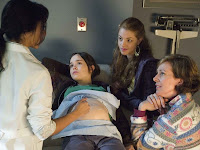 The film’s real progressive moment comes when Juno realizes that her idea of perfection isn’t perfect. She realizes that a father who doesn’t want to be there would be as bad as a mother who hadn’t wanted to be there. She sees that a father isn’t a necessity–or perhaps simply that two parents aren’t a necessity. Yet what does this all add up to mean? There’s certainly a moment of female solidarity (and this isn’t the only one, certainly, in the film), and a difficult decision that she makes independently. But, as with other conclusions I’ve made, I’m left with the question of “So what?”
The film’s real progressive moment comes when Juno realizes that her idea of perfection isn’t perfect. She realizes that a father who doesn’t want to be there would be as bad as a mother who hadn’t wanted to be there. She sees that a father isn’t a necessity–or perhaps simply that two parents aren’t a necessity. Yet what does this all add up to mean? There’s certainly a moment of female solidarity (and this isn’t the only one, certainly, in the film), and a difficult decision that she makes independently. But, as with other conclusions I’ve made, I’m left with the question of “So what?”As you work toward developing this film, and if you’re at all interested in breaking some new ground by portraying real women on-screen (rather than the conventional stereotypes of women we’ve gotten so used to seeing) please be advised of the following:
1. Do not cast Jessica Alba, Megan Fox, Katherine Heigl, and Anna Faris, and then parade them around in giant heels, wearing some semblance of revealing business suit-esque attire, probably involving excessive cleavage and certainly showcasing thirty gratuitous inches of bare leg.
11. Do not turn this into Sex and the City Takes a Business Trip, even though that’s undoubtedly what everyone will encourage you to do.
Good luck!
Naturally, Harold and Kumar are accused of working together as a “North Korea and Al Qaeda alliance,” and they get shipped off to Guantanamo Bay. All this happens within the first 15 minutes of the film, and by the 20-minute mark, they’ve already escaped Guantanamo. The rest of the film follows their wandering across the United States, looking for a way to prove to the paranoid government that they aren’t, in fact, terrorists.
Because the first film was such an unexpected surprise in its intelligent dissection of both racial stereotypes and stoner culture (ha, seriously), I was excited about seeing the sequel. Unfortunately after sitting through most of the movie feeling somewhat uncomfortable, I left the theater entirely enraged.
 To say this film is misogynistic is an understatement. What most upset me wasn’t merely that women were unnecessarily objectified (I can’t remember the last time I saw so much gratuitous nudity), or that women were basically one-dimensional morons (and were given some of the most ridiculous dialogue I’ve heard in awhile, which is saying a lot in the age of Judd Apatow).
To say this film is misogynistic is an understatement. What most upset me wasn’t merely that women were unnecessarily objectified (I can’t remember the last time I saw so much gratuitous nudity), or that women were basically one-dimensional morons (and were given some of the most ridiculous dialogue I’ve heard in awhile, which is saying a lot in the age of Judd Apatow).
What bothered me most was that I couldn’t help but laugh at and appreciate the subversive way the film deals with race; the writers manage to satirize traditional perceptions of racial groups by using stereotypes to reveal the ridiculousness of racial stereotypes (yeah, I just defined satire), but for some reason, the writers couldn’t manage to treat traditional stereotypes of women with the same care.
While the audience laughs with the characters when race is addressed (when an old white woman on a plane stares at Kumar in fear, he morphs into a terrorist right before her eyes, complete with full beard and turban), the audience laughs at the female “characters” (like when two prostitutes, confronted with the question, “Have you found the love of your life?” get all ditzy and say, “No, we’re whores!”). Welcome to the films of the millennium: if we’re talking about race, forget about gender (see also Black Snake Moan, Hustle & Flow, maybe even Borat).
Two of the more extreme examples of sexism in the movie are scenes involving gratuitous female nudity (“the bottomless party”) and clichéd portrayals of prostitutes in a brothel.
The Bottomless Party
You know you’re in for a real treat when Harold and Kumar show up at a pool party where all the women walk around completely naked—oh, except for their tops. When they enter their friend’s mansion, in hopes of getting some help in avoiding Guantanamo again (they’ve escaped by now), they’re confronted with an array of tanned women’s asses and barely-there pubic hair, and whose mouths are wide open. In similar reaction, the group of men sitting next to me in the theater couldn’t stop making comments (“yeah man, hit that, daaaaaamn, that’s what I’m talkin’ about”), and this scene lasted at least seven hours from my perspective.
My favorite part of the scene was when one of the women started to take her top off, and the host responded with something along the lines of, “What the hell do you think you’re doing? Put your top back on; I don’t know what kind of party you think this is … ” Of course, she rolled her eyes as if to say “silly me” and apologized while covering her breasts. The audience got a terrible kick out of that. Because, if you didn’t know, it’s hilarious to watch women walk around naked while men tell them what they can and can’t do with their bodies. Sure, in the final moments of the scene, Harold and Kumar pull down their pants, but then the camera cuts away. What, no cock-shot?
The Brothel
Neil Patrick Harris is gay in real life, so I’m still coming to terms with Neil Patrick Harris supposedly playing himself, when what he’s really doing is playing  a heterosexual, drug-addicted character named Neil Patrick Harris. Regardless. Neil insists on taking Harold and Kumar to a brothel to get [insert several degrading comments about screwing women here]. Harold refuses, instead choosing to sit with a group of prostitutes, who he then complains to about his devolving friendship with Harold, while the prostitutes console him. (It’s unfortunate here that the writers rely so heavily on conventional clichés regarding “the hooker with a heart of gold” stereotype and the mother/whore fantasy.) Kumar, of course, takes two prostitutes into a room, while Neil goes through several choices before deciding on the one with the biggest breasts.
a heterosexual, drug-addicted character named Neil Patrick Harris. Regardless. Neil insists on taking Harold and Kumar to a brothel to get [insert several degrading comments about screwing women here]. Harold refuses, instead choosing to sit with a group of prostitutes, who he then complains to about his devolving friendship with Harold, while the prostitutes console him. (It’s unfortunate here that the writers rely so heavily on conventional clichés regarding “the hooker with a heart of gold” stereotype and the mother/whore fantasy.) Kumar, of course, takes two prostitutes into a room, while Neil goes through several choices before deciding on the one with the biggest breasts.
Kumar gets his girls to make out with each other, but then bursts into tears about his ex-girlfriend marrying some government-employed douchebag. So we’ve got two naked women sitting on either side of him, consoling him, helping him feel better about himself just after they’ve made out with each other—what more could a guy want? Is it just me, a feminazi audience member, who’s expecting too much? Maybe I’m over-analyzing. Maybe this is funny. They’re just whores after all. And Neil reminds us ever-so-subtly by literally branding his giant-breasted whore’s ass.
Throughout the film, the audience can’t help but be positioned as a collective participant in this sexism, and while I appreciated the intelligent discussion of post-9/11 race relations, I couldn’t  help but hate the film’s mistreatment of women. The writers had many opportunities to complicate gender issues, and yet, as always seems to be the case in films geared toward male audiences, they chose to exploit the women instead, turning them into nothing but naked body parts; their only importance is the fulfillment of male desires. I hated that. And I hated how, when I got up to leave the theater, the group of men sitting next to me talked about needing to wait out their hard-ons before they could stand up to leave.
help but hate the film’s mistreatment of women. The writers had many opportunities to complicate gender issues, and yet, as always seems to be the case in films geared toward male audiences, they chose to exploit the women instead, turning them into nothing but naked body parts; their only importance is the fulfillment of male desires. I hated that. And I hated how, when I got up to leave the theater, the group of men sitting next to me talked about needing to wait out their hard-ons before they could stand up to leave.